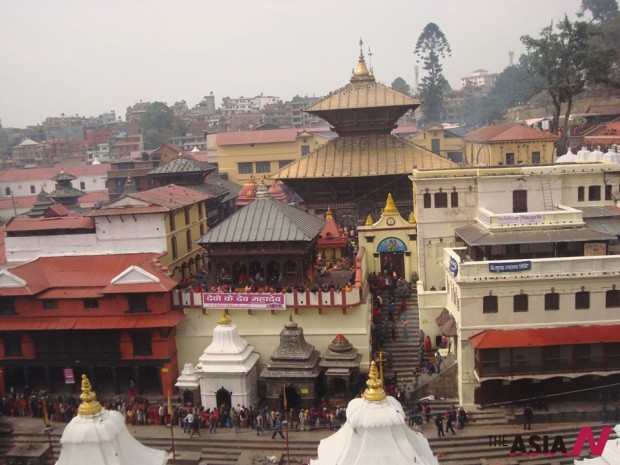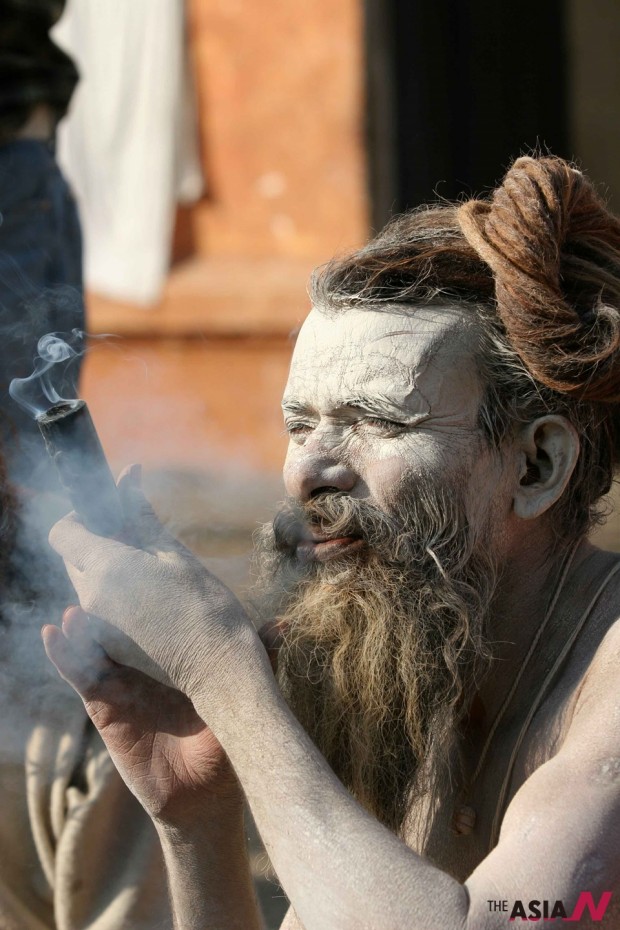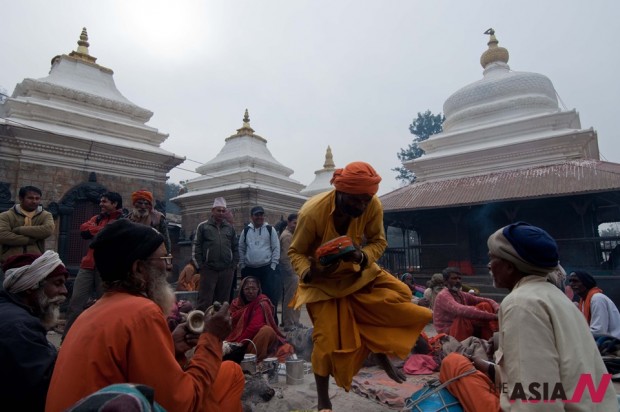A million Hindus throng Shivaratri Festival

Nepalese Hindu devotees queue up to offer prayers to Lord Shiva at the Pashupatinath Temple. (Photo : Bishnu Gautam)
Thousands of Hindus from both Nepal and India thronged the famous Pashupatinath Temple in Kathmandu to observe the festival of Maha Shivaratri by offering worship to Lord Shiva, one of the three main Gods of Hindus, on February 27.
As the name suggests, it is the night (ratri) of Lord Shiva and the devotees offer worship to the idols of Shiva on this particular day every year. Pashupatinath Temple, located in the heart of Kathmandu on the bank of the Bagmati River, is one of the important Shiva shrines in South Asia. The ancient golden pagoda temple has been a centre of affection for all Hindus since time unknown. Historians have yet to trace the date of the construction of this beautiful temple.
According to officials of the Pashupatinath Area Development Trust (PADT), the government entity that manages the temple, this year over 900,000 devotees thronged the temple premises on the auspicious day of Shivaratri and nearly half of them offered worship in the main temple by standing for about eight hours in the serpentine queues.

A Sadhu smokes marijuana in a chillum (traditional clay pipe) during the celebrations for the Maha Shivaratri festival at the Pashupatinath Temple area in Kathmandu, capital of Nepal. (Photo : Xinhua/NEWSis)
Key attraction: Naked smoking saints
Some 4,000 saints, including the naked ones, of five different sects arrived on the temple premises about two weeks before the festival day to offer worship. These mendicants, who are called Sadhus in the local Nepali language, are the key attraction of Shivaratri every year. These Sadhus live naked with their face and body smeared with ash smoking marijuana.
They stay under makeshifts. They keep themselves warm by burning logs and blowing smokes of marijuana. As consumption of marijuana is strictly banned in Nepal, most youth love to visit the Sadhus only to enjoy smoking marijuana. Many local youth and tourists were seen enjoying marijuana this year even though the police had increased patrolling to control the consumption of the narcotics by locals.
The entire temple complex, the huts and the jungle across the temple, were occupied by the Sadhus and other visitors. They chanted Om Namah Shivaya while walking around the premises of the temple. The crowd of devotees was so huge that the people had to wait for minutes to move a step ahead. Again there were vendors to congest the area further by spreading their wares along the roads. Most devotees fast all day and take food only after offering worship.
“I stood in the queue for eight hours and got an opportunity to offer worship to Lord Shiva,” Binod Neupane, one of the devotees, told Magazine N. He said he offers worship to Lord Shiva, the God of destruction, on the Shivaratri Day every year.
However, for those who went to worship in the night, they did not have to wait long. “We reached the temple premises at 8:00 PM and our turn came in an hour,” Arpana Adhikari, a newly married woman, said.

Followers of Lord Shiva dance in Ram Mandir of Pashupatinath Temple on the eve of Maha Shivaratri Festival in Kathmandu, Nepal, Feb. 26, 2014. (Photo : Xinhua/NEWSis)
Eight-hour queues
Devotees as far from Indonesia and Malaysia arrived in Kathmandu to offer worship in the Pashupatinath Temple this year. The Malaysian devotees were the talk of the town as they were the ones who offered the largest amount of money at the temple on Shivaratri Day.
During midday, a Nepal Army helicopter flew over the sky dropping flowers on the temple and the crowds cheered at the scene.
The PADT and other organizations managed food and logs for the Sadhus throughout their stay on the temple premises. Moreover, it rained heavily the day after Shivaratri in Kathmandu, which affected the naked Sadhus badly as temperatures dropped. They were seen shivering and asking passersby for hot tea. The PADT saw off the Sadhus on March 1 by giving them cash and other presents. According to officials, Rs. 3 million was spent to see them off.
President Dr. Ram Baran Yadav and former queen Komal Shah, among others, visited the temple and offered worship during the festival. Listed as a UNESCO world heritage site, the Pashupatinath Temple draws big crowds of devotees on other festival days as well.
Among the Hindu trinity gods Brahma, Vishnu and Maheshwar, the last one is regarded to be the god of all gods. Shiva is another name for Maheshwar and he is worshipped with different names like Mahadeva, Shankar, Rudra, Kailashpati, Mahesh, etc. Hindus from all over the world want to pay a visit to the temple of Pashupatinath once in their life.
The entire Pashupatinath area was decorated like a bride for the Shivaratri Festival. An artificial Mount Kailash, the main abode of Lord Shiva, was also constructed for the visitors this time near the temple of Pashupatinath.













































